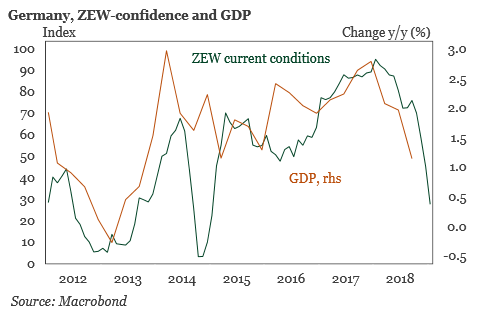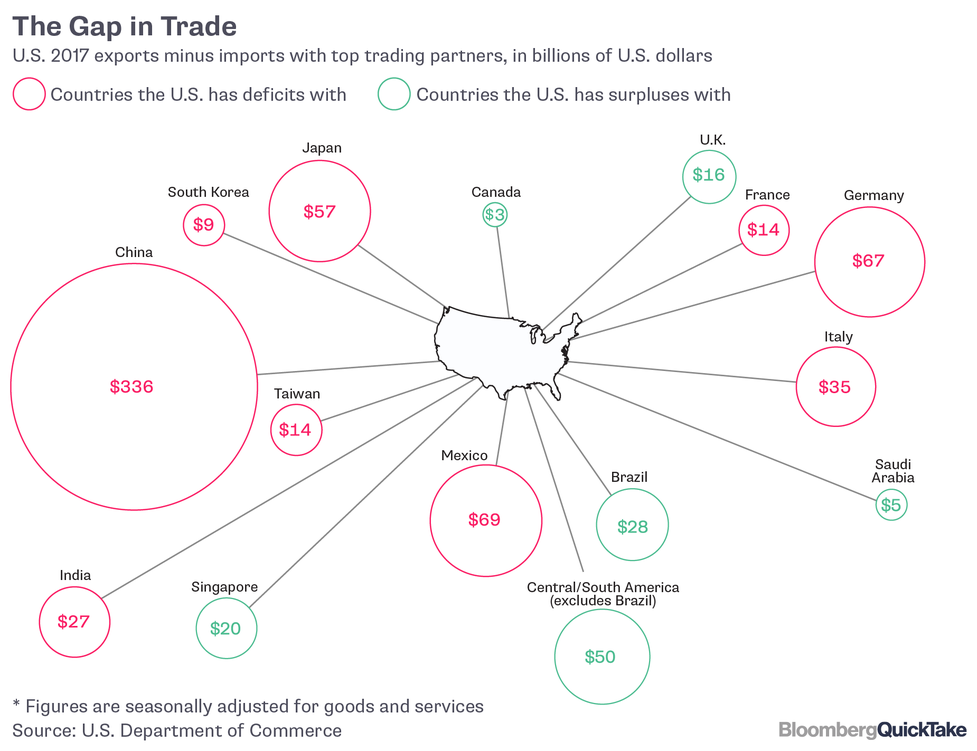by Chris Becker
One of the most closely watched economic prints on the calendar, the monthly German ZEW Survey, was released on Wednesday. The continued Brexit imbroglio is obviously weighing on the dominant European economy, as does Trump’s Jacksonian trade policies which has seen the “current condition” factor flop to a new four year low, presaging a fall in GDP:

From the FT:
“It is remarkable that the ZEW Economic Sentiment for Germany has not deteriorated further given the large number of global economic risks,” ZEW president Achim Wambach said.
Not exactly upbeat is it? This comes after the weaker growth in China in 4Q last year with the German economy itself barely ticking over at 1.5% per annum, the lowest in five years. The IFO Institute has lowered its 2019 forecast to 1.1% while the German government will update its 2019 economic growth forecast next week.
After a dreadful industrial production print earlier this month reinforcing the sombre tone, some blame could be put down to climate change, with research house Pantheon Macroeconomics suggesting the lower level of the Rhine is to blame for contraction.
From Bloomberg:
One main factor behind the slump in the German manufacturing sector was the failure of inflation, particularly producer price inflation — which tracks cost increases in certain areas of manufacturing — to drop in line with the tumbling price of oil in recent months. That’s in part, Pantheon says, because of what’s happening to the Rhine, which has seen its water levels drop after a drought during the summer and fall.
The river is fed by glaciers and rain. But alpine ice flows have been plunging, Wilfried Hagg, a glacier expert at Munich University.
“The Alps are warming at an even faster rate as snow and ice melts,” Hagg told Bloomberg on Friday. “A warming climate means that incidents like the low river levels this summer are more likely to occur.”
The Rhine is crucial for German industry because it provides not only an avenue for the distribution of raw materials to German manufacturers but also a means of transporting finished goods to Europe’s largest port, Rotterdam, which sits at the river’s mouth.
Low water levels in the Rhine, Pantheon says, effectively amount to a “supply shock in German manufacturing,” by lowering the availability of key goods needed for the sector, which come to factories situated on the river by barge. These barges need a depth of water to traverse the river above current levels.
Maybe it was too late for the Germans to go green after all…
The European Central Bank meets later tonight, Australian time and President Mario Draghi is expected to hold a much more dovish tone as the beleagured central bank has almost no ammunition left in the chamber to arrest the declining fortunes of the continent as GDP growth stalls to a standstill:
source: tradingeconomics.com
There is almost no desire for higher interest rates at this time, nor any actions that would further decrease sentiment weighed down by a significant deterioration in the Euro trade balance, which is set to fall even further even if there is a magical unicorn deal for Brexit in the coming months. Super Mario is going to have to wait a lot longer for any “normalcy” – if there’s such a thing in a union currency without monetary union – to interest rates.
Most importantly, if Trump begins another salvo in his trade war the target most in sight is Europe, which was the main source of demand for exports in 2018, with a significant trade imbalance with the USA:

Absent any other geopolitical risk, the German powerhouse may drag down the whole continent come 2019.